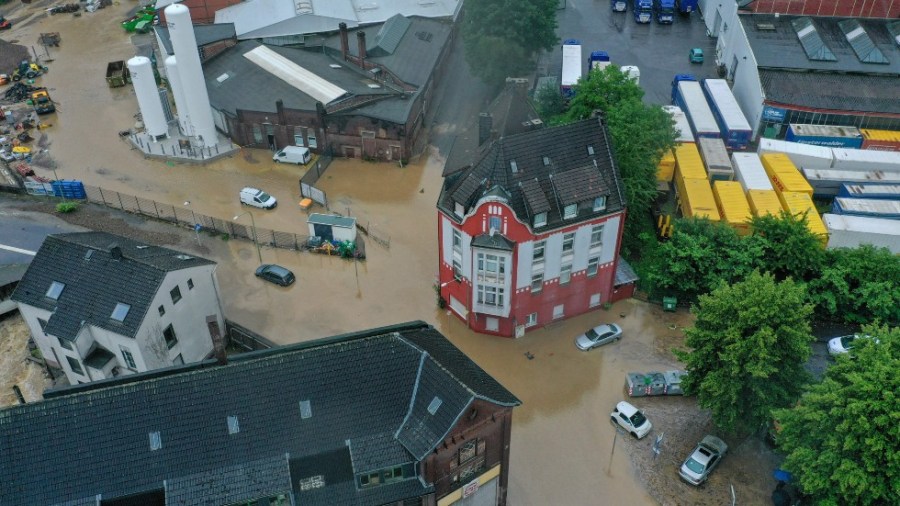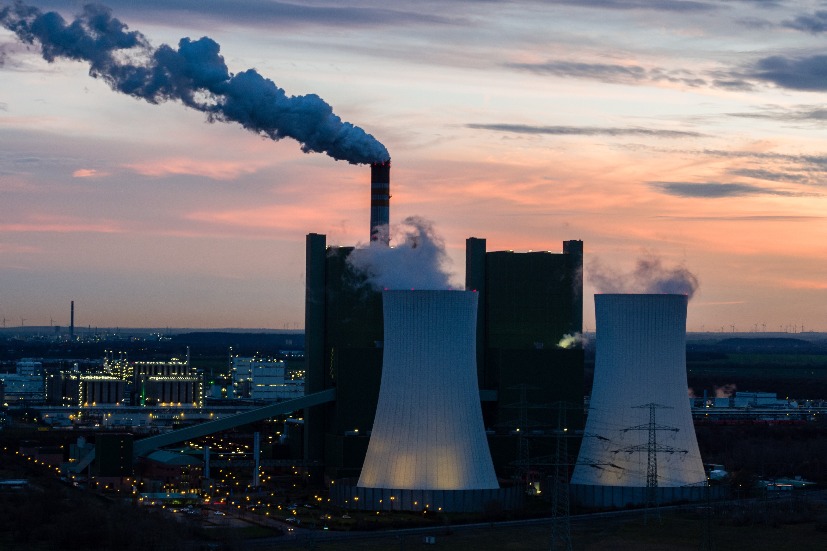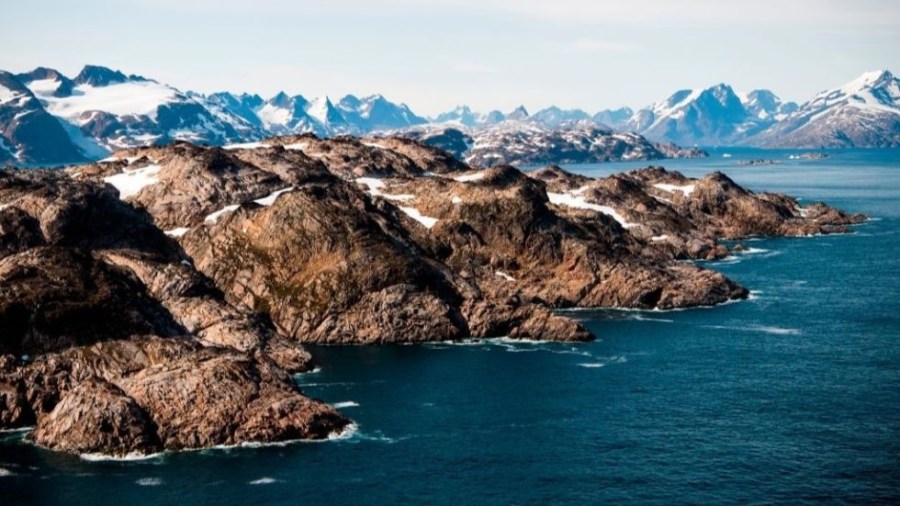Equilibrium/ Sustainability — NASA: Moon and climate change will team up to flood US coasts in 2030s
Today is Friday. Welcome to Equilibrium, a newsletter that tracks the growing global battle over the future of sustainability. Subscribe here: digital-stage.thehill.com/newsletter-signup.
NASA scientists are warning of a new factor that could add to the danger coastal cities face from more powerful storm surges and rising seas — moon wobble — as Joseph Guzman reported for The Hill’s Changing America.
The moon controls the tides — and during half of its 18 year cycle, a wobble in its orbit means that “high tides get higher, and low tides get lower,” NASA noted.
That half of the cycle will next begin in the 2030s, when temperatures will also be hotter and sea levels higher due to climate change. And thanks to moon wobble, many places will also “begin to experience recurrent high-tide flooding,” agency scientists wrote in Nature Climate Change.
Flooding, of course, isn’t just a danger for the coasts, as we will see today in our look at yet another climate-linked disaster — this time in Europe. But an outsized responsibility for warding off future catastrophe lies on the shoulders of China, which is now wading into a new carbon market but probably won’t cut its emissions anytime soon.
For Equilibrium, we are Saul Elbein and Sharon Udasin. Please send tips or comments to Saul at selbein@digital-stage.thehill.com or Sharon at sudasin@digital-stage.thehill.com. Follow us on Twitter: @saul_elbein and @sharonudasin.
Let’s get to it.
Death toll surges as floods batter Germany and Belgium

More than 120 people have died in catastrophic floods that have drenched Germany and Belgium, with hundreds still missing as of Friday afternoon.
“I fear that we will only see the full extent of the disaster in the coming days,” German chancellor, Angela Merkel, said on Thursday, according to The Guardian.
Authorities in the German state of Rhineland-Palatinate said 63 people died there, including at least 12 assisted living residents, while neighboring North Rhine-Westphalia reported 43 deaths, Jon Henley reported for The Guardian. Officials warned that these numbers could rise further, with one district in Rhineland-Palatinate reporting that 1,300 people were still unaccounted for.
Armin Laschet, governor of North Rhine-Westphalia, said Germany was experiencing a “flooding catastrophe of historic proportions,” Guy Chazan reported for the Financial Times (paywall).
In neighboring Belgium, the death toll by Friday had risen to at least 20, with 20 others still missing, according to Reuters. Most of the deaths occurred near Liège, despite an area evacuation order, the Times reported.
What caused the floods: Summer storms began pounding Germany and Switzerland on Tuesday, damaging an airport hangar in southern Switzerland and blowing trees onto roads and rail tracks in Zurich, The Associated Press reported. German officials warned of “extreme storms” Tuesday, while some foresters welcomed the weather after a series of dry summers, according to the AP. Heavy rains also hit the Netherlands that day.
Meteorologist Jeff Berardelli attributed the floods to “severe blocking” from an “anomalous wavy jet stream.” That caused a “cutoff low” — when a low pressure cell gets detached from the jet stream and ends up stuck like a car “on the side of a highway,” according to WUSA9.
That blocking pattern, Berardelli said, was “also partially responsible” for recent heat waves in Europe and the Pacific Northwest.
‘BOBBING LIKE BATH TOYS’
Rains continue: Rain fell Friday as rescue crews scrambled to reach cutoff villages, The New York Times reported in a thread of updates about the floods.
“Vehicles bobbed like bath toys, six houses collapsed and half of those that remained standing had gaping holes torn by floating debris,” in the German village of Schuld, while about 30 miles north in Erftstadt-Blessem, a part of a 19th-century castle collapsed in a landslide, the Times reported.
“Many people are still in their homes,” Dirk Schneemann, a spokesman for one flooded district, told the Times. “We are not able to reach all of them.”
A climate disaster: The devastating floods hit Central Europe just days after the European Commission unveiled a massive plan to cut carbon emissions by at least 55 percent of their 1990 levels by 2030, as Equilibrium reported Wednesday.
While connecting climate change to any single flood event requires further scientific analysis, climate change is already causing heavier rainfall in many storms, Melissa Eddy and Jack Ewing wrote in that Times update thread.
But Holger Sticht, from Friends of the Earth Germany, told the Times that “the catastrophic results of the heavy rain in the past few days are largely homemade,” while European Commission president Ursula von der Leyen said that the flooding was “a clear indication of climate change.”
Takeaway: Regardless of the precise role of climate change, the tragedy of these floods is that authorities knew they were coming, but many people in their paths did not.
Although weather forecasting has improved over the past decade, hydrometeorologist Linda Speight said that communications aren’t keeping up, Megan Specia reported in the same thread.
“People were still in their houses when the water came,” Speight told the Times, “and there was no need for that to happen.”
China wants to start trading carbon before cutting it down

China just launched the world’s largest carbon-trading market — tracking and trading a whopping 15 percent of total global emissions.
It takes the approach that the first step to cutting emissions is gathering high quality data, and the first step to that is to get people trading together.
So everyone in China now has to track their emissions? No, and that’s part of the point. As Chris Buckley noted for The New York Times, China is the size of the United States, with three times as many people and carbon-polluting infrastructure scattered everywhere.
Around half the country’s population works outside the formalized economy — the one with taxes and regulation that the carbon markets would build upon. And like their counterparts in the West, they have depended on high-carbon stimulus spending to fuel a post-coronavirus recovery, as Fiona Harvey noted for The Guardian.
Baby steps: To that end, the new market only includes the power sector, which alone accounts for 40 percent of Chinese emissions and 15 percent of global emissions — making the new market the largest in the world, the Times reported.
Like the EU, the Chinese government will dole out pollution allowances to firms that can then buy and sell amongst themselves. The supply of allowances is so plentiful that carbon prices are about $8 a ton.
For a basis of comparison, the price of carbon on the EU’s Emissions Trading System (ETS) is $65 — although that market had similarly low prices until the EU slashed supply of carbon allowances in 2016, the Financial Times reported.
Also, so far the Chinese government has placed no absolute limits on how much carbon dioxide power companies can emit: Plants with deep pockets can buy all the carbon credits they want.
A RELAXED MARKET TO KICK THINGS OFF
A data chicken-egg problem: Before this measure, power plants could also emit as much as they wanted to — at no price. The Chinese are doing what the EU did with its carbon market, treating it “as a trial phase where the rules are relaxed to get buy-in from companies,” financial analyst Matt Gray told the Financial Times.
Climate accounting is a series of nested chicken-and-egg problems, said Chris Snyder, North America chairman of the Partnership for Carbon Accounting Financials.
“You can’t have emissions reductions without emissions data,” Snyder told Equilibrium. And experts like Snyder also have to factor in how reliable that data is: Is it third-party audited, self-reported or simply a guess?
What you measure, you can manage: The new market’s first product, then, will be a wealth of this sort of data as firms begin trading emission-linked carbon credits through a new economy. In theory, this will bring what was once a shadow sector onto the books and foster the ecosystem of the third-party providers and auditors that make true accounting possible.
That seems to be why the Chinese carbon markets start with power companies, which can track emissions out of their smokestacks, before moving to more complex (though still smokestack-based) industries such as metals, cement and petrochemical refining.
Still, Gray told the Financial Times, this will have only a “marginal” impact on China’s decarbonization, particularly if the government keeps issuing free pollution credits. And President Xi Jinping has promised to bring the country to its planned emissions peak by 2030 and carbon neutrality by 2060, Reuters reported.
Takeaway: To actually decarbonize, experts said, China will have to set absolute, gradually decreasing limits for emissions. For now, though, the government appears to want to get people used to trading carbon, field testing a market it can regulate later.
ROUND-UP
Follow-up Friday

In which we check in on news from earlier in the week to see how things have moved on.
EU states divided over carbon reduction plan
- After the EU announced sweeping plans to fight climate change — which we covered Wednesday — member states are now butting heads about certain details.
- The new measures included expanding the continent’s carbon market, the Emissions Trading System, to sectors such as building heating and car transport.
- But France, Spain, Italy and Latvia warned that such measures could be “regressive,” pushing costs onto the Union’s poorest, the Financial Times reported — and the Netherlands doesn’t want its money redistributed to the south.
Greenland turns away from fossil fuel development
- Greenland, a “semiautonomous territory” of Denmark — a country which backs the new EU carbon reduction plan — announced it is suspending oil exploration, The Associated Press reported.
- That means leaving a potential 17.5 billion barrels of oil in the ground, according to United States Geological Survey estimates gathered by the AP.
- “The future does not lie in oil,” a government statement said. “The future belongs to renewable energy, and in that respect we have much more to gain.”
- Other countries disagree — Botswana, as we reported Monday, plans to sell its coal while it still can. And Gulf states plan to use their fossil fuels to build capital for a green transition.
Maine bans toxic “forever chemicals” in new law
- Maine is the first state to institute a broad ban on PFAS compounds, the toxic “forever chemicals” to which we’ve paid a lot of attention this week.
- PFAS are present in firefighting foam, household products and also fracking fluid — a finding that has led officials to demand greater transparency.
- Maine’s law prohibits the use of PFAS in all products by 2030 — requiring manufacturers to report when items sold in Maine have added PFAS beginning in 2023, Tom Perkins reported for The Guardian. The state will then determine which “unavoidable” items, such as medical devices, can still contain PFAS.
- The Environmental Working Group unveiled a new analysis on Friday that showed a twelvefold increase in suspected industrial dischargers of PFAS.The review found more than 29,000 sites that are known or suspected of using PFAS.
{mosads}With hopes that your weekend is free of contaminating chemicals, devastating downpours and flaming forests, we leave you with two final developments:
- Floridian fish have written a column in the Tampa Bay Times, in which they demand that the government save them — and aquatic associates — from the toxic red algae that is killing them “to the tune of hundreds of tons.”
- Tel Aviv will now require dog owners to submit pet poop samples when renewing a dog license, Green Prophet reported. Inspectors can then identify who left that canine caca on the curb — a circumstance, which Sharon knows from her decade in the region, has become all too feculent.
Please visit The Hill’s sustainability section for the web version of this newsletter and more stories. We’ll see you on Monday.
Copyright 2023 Nexstar Media Inc. All rights reserved. This material may not be published, broadcast, rewritten, or redistributed. Regular the hill posts







